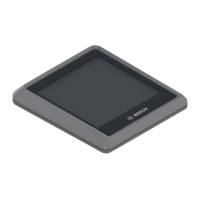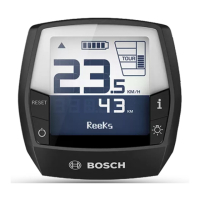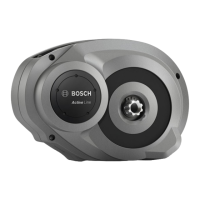MY23P0a -52_1.0_11.10.2022
226
Cleaning, maintenance and inspection
7.5.6 Checking the belt
7.5.7 Checking the belt for wear
Check belt for indications of wear:
Figure 207: Indications of wear on a belt
1 Carbon tensile fibres are exposed
2 Worn webbing with visible polymer
3 Missing belt tooth
4 Imbalance
5 Shark tooth
6 Cracks
If there is one or more indications of wear,
contact your specialist dealer. The belt needs
to be replaced.
7.5.8 Checking the belt sprockets for wear
Check belt sprocket.
The tooth profile is rounded and the teeth are
thick. The belt sprocket does not need to be
replaced.
Figure 208: Optimum tooth profile
The tooth profile is pointed and teeth have
worn thinner. Contact specialist dealer. The
belt sprocket does need to be replaced.
Figure 209: Worn tooth profile
Figure 210: Photo showing example of worn tooth profile
7.5.9 Check belt tension
If the belt tension is too low, this can cause the
system to skip over a tooth or slip, i.e. the teeth on
the belt slip over the teeth on the rear wheel belt
sprocket. Excessive tension can cause damage to
the bearings, sluggishness in the system and
increased wear on the electric drive system.
The adjustment of the belt tension varies
depending on the pedelec. Common tensioning
systems include angled or vertical drop-outs,
horizontally sliding dropouts and eccentric bottom
bracket axle.
There are three common methods of measuring
belt tension:
• Gates Carbon Drive mobile app for iPhone® and
Android®,
• Gates Krikit tension meter and
• Eco tension tester.

